Scottish 70/-
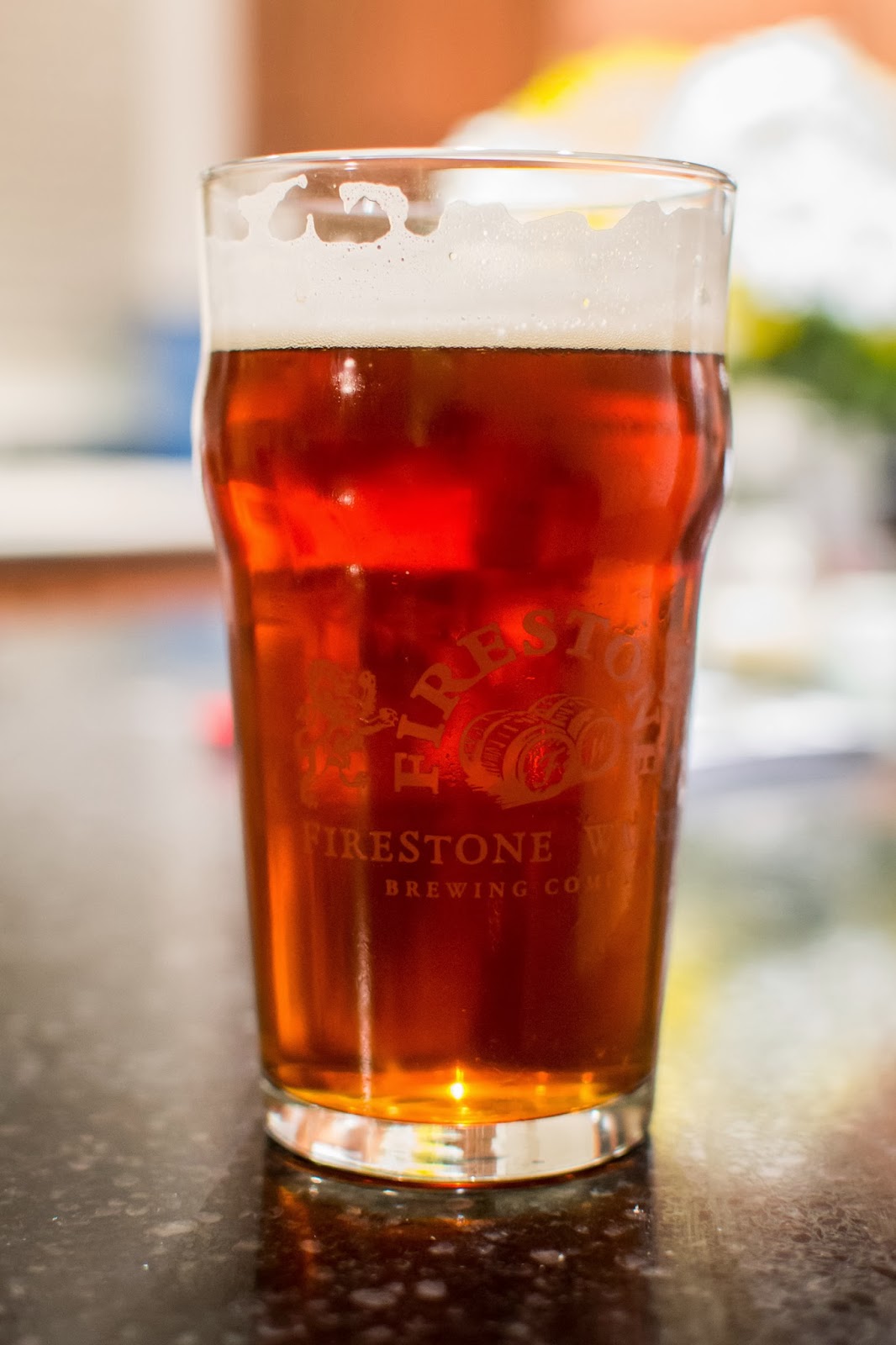
Whew, I’m back from a short writing hiatus. Between the holidays, getting a new puppy, work, and just not making the time, it’s been a little while. On the bright side, I have been brewing in the meantime, so I’ll have a bunch of new content up shortly. For the sake of keeping thing chronological, let’s start with this Scottish I brewed to have on tap for Thanksgiving and Xmas.
I’ve said it a few times before, but I really like having a low-gravity session beer on tap most of the time. It’s nice to be able to have a pint or two and still be a productive afterwards. This is nearly the same recipe I brewed last time, with only a couple changes. I went with C60 rather than carastan for a little more caramel flavor, and I switched out 2-row for some Marris Otter. Other than that, nothing terribly new.
As for the brew day, it wasn’t too interesting. I am noticing that my mash tun isn’t terribly well suited towards super-low gravity beers due to the wide diameter (17.5 or 18″, i forget). I really have up the strike water volume to near 2qts/lb to have enough liquid to recirculate. Anyway, aside from that, it was smooth. 60min mash, 60min boil, and I chilled down to 64F. We had a beautiful fall here in AZ, and the temps made chilling wort much easier.

Brewed: 10-26-13
Kegged: 11-02-13
OG: 1.037
FG: 1.011
ABV: 3.4%
IBU: 16
6 Gallons
5.5lbs Marris Otter
1lb Carastan
8oz Munich
8oz Honey Malt
4oz C120
3oz Chocolate Malt
Mash @ 158*
9g Apollo @ 60
WLP090 – Super San Diego Yeast
Thanks to how quickly Super San Diego ferments, this was done in like 3-4 days, and in the keg on day 7. The picture up top was after about 10 days in the keg, and it continued to clear up to a brilliantly clear deep red hue after about a month.
As for how it turned out? Pretty damn good. The Marris Otter definitely gave the beer some extra needed depth of flavor it was missing. The aroma is all malt, literally zero hop. The flavor pretty much follows. Sweet caramel and toasty malt flavors, no hop flavors to speak of, and a clean finish. I won’t say this recipe is finished, as I still would like to see what a few changes would make, but overall this was a really nice low ABV beer for fall, and went over really well with the fam for the holidays.
Anyway, stay tuned, as I have like 3-4 beers to write about in the next week or two. Oh, and Jacob Dennis, shoot me an email, you never responded, and I owe you 8oz of Amarillo.
Cheers!
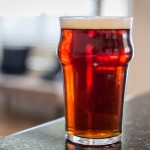
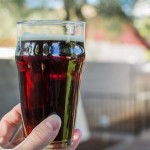
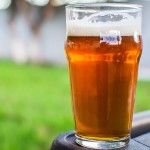
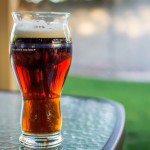
Welcome back! I've been checking the site every few days hoping for an update, glad to see one today 😀
Ahhhhh I feel whole again! I just wanted to say thanks, your blog, above and beyond the tremendous wealth of information, has driven home the need for fermentation temp control, at least for me. It's really helped me brew better ale. SIDE NOTE – I'm heading out to Scottsdale for some Spring Training fun in the sun and outside of Papago Brewing, are there any 'must go's' that you would recommend?
Did you add the chocolate malt just for color, or did it add anything to the flavor? TIA
Hey Scott!! Ditto what Captgus said. I'm so glad you're back. I was starting to worry that you'd left us to forever look at the picture of the hop bag giveaway. Thanks for all you do.
How would you compare the 090 to 007? Most of my best brews have been 007.
Yay. In was getting worried this wouldn't come back to life. Looking forward to updates. Scottish 70 looks great.
Yay. In was getting worried this wouldn't come back to life. Looking forward to updates. Scottish 70 looks great.
what kind of dog you get?
Thanks!
Four Peaks brewery in Tempe. Aside from the beer, the food and atmosphere is awesome. Either The Hungry Monk in Chandler or Flanny's in tempe have awesome tap lists.
Also check out some of the Fox Restaurant Concepts for food in Scottsdale. They have some ammmmmazing restaurants.
Mostly just for color.
090 is cleaner and more 'American'. It drops out pretty fast, but not 007 fast. It also attenuates better than 007.
Australian Shepherd and Queensland Heeler mix. She's adorable, but she's a handful.
Thanks!
Hi Scott, I have been brewing for a couple of years now, slowly progressing from kits to extract and now I am an avid mini-masher! The key source of information in my quest to be a master brewer is John Palmer's 'How To Brew'….until I stumbled across your site. I think I Googled 'How to make better IPA' and there it was…your superb website. Following your generous advice has paid huge dividends already, and reinvigorated my enthusiasm for brewing. I am one of those people who has been religiously following IPA recipes that involve the use of 2 or 3 oz of hops, and then left wondering why my beers don't taste anything like my favourite American craft beers. I now routinely use 300-400 grams of hops and have started to get the results I crave. I've ordered a gadget off the internet that will hopefully help me control my fermentation temperatures better and am planning on using gelatine on my latest batch 3 days before I bottle. I can't get it any colder than 52*F yet (I plan to get a chest freezer in the future and hook it up to the heat regulator I have ordered), but I'm hoping it will help improve the clarity of my beer. Anyway, I just wanted to say thanks for the great advice and enjoyable website – really looking forward to your next post.
Thanks! And keep on brewing!
@Mark Waite
Assuming you already have temperature controls, good sanitation and take care your yeast, kegging will make a dramatic difference in hop aroma/flavor. Kegging gives you the ability to purge out Oxygen(your enemy) with C02. I also find split my dryhop half in primary and half in the keg(bright tank) improves aroma. I don't believe you will need the 300-400 grams of hops for a standard IPA with kegging, DIPA maybe 🙂
My last recipe used 5 oz total and the aroma could not have been better!
1oz @60min, 2oz whirlpool (170 degree, 30 min aroma steep) 1oz dryhop in primary and 1 oz in keg. @ 6% ABV.
Cheers
@Mark Waite
Hi Mark,
I would totally agree with eveyrthing that JMICH24 said about the amount of dry hops used in your beers. 300-400 grams of hops (10-14 oz) should not be needed to produce a good IPA. That amount of hops should only cause problems such as an excessive amount of vegetal matter in the boil, decreased yields, and poor total isomerization as there's just too much stuff to move around. Also, 400 grams worries me as to the amount of hops you are using in the DH. Using too much hops (or for too long) can create vegetal/cheesy/metallic flavors in the finished beer. If you haven't yet, give late additions a try. You can usually get the most "bang for your buck" by adding more of the flavorful hops at the end of the boil and use a high alpha hop for your bittering charge. Happy brewing.
Thank you or your insightful comments and useful advice, chaps, although it is slightly at odds with what Scott had to say in his post 'How To Make Better IPAs' https://www.bertusbrewery.com/search/?q=Better+IPA. Typically I will dry hop with about 100 grams. I have been experimenting with hop bursting lately, using up to another 300 grams in the last 15-10 minutes. I used Scott's Citrus Hop Burst recipe as the basis of my latest brew and it has turned out excellent. If I bitter in the traditional way,
I would use quite a bit less hops. My set up only enables me to do 17 litre boils at the moment, which, after evaporation, means I have to top up the fermenter quite a bit to get 23 litres (I'm in the UK, so work in imperial gallons). When I do this, I sparge the hops to try and get as much flavour out of them as possible. I'm trying to improve my technique all the time, starting with controlling my fermentation temps more carefully with a thermostat. I would definitely like to try kegging; I hadn't previously considered the difference this would make to the flavour of the beer, but it's obvious when you think about it. Anyway, thanks once again for sharing your wisdom, it's most appreciated. Cheers!
It depends on the IPA for me, but I do like 250g+ of hops for a big west coast IPA (7%+). The lines are fairly blurred between West Coast IPA and Double IPA these days.
Firestone Walker uses 4lbs/bbl of hops in Union Jack, that's like 350g in a 6gallon batch. But for a 6-6.5% ABV beer IPA, ya, you shouldn't need quite that much. 200-250 is usually plenty.
Scott, to what volume of CO2 did you carbonate this Scottish 70 shilling? What pressure was your regulator set to and what temperature is your keezer set? Thanks!
Roughly 2.4-2.5vol. My Kegerator is set to 32F, but the kegs stay at roughly 38F. I keep the CO2 at 10PSI